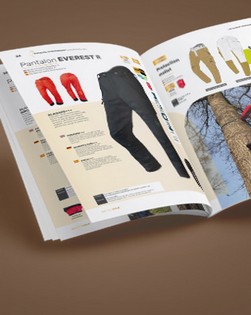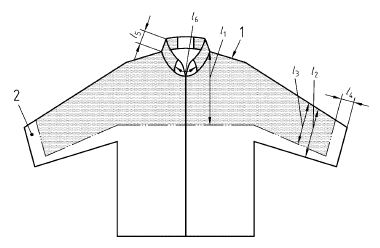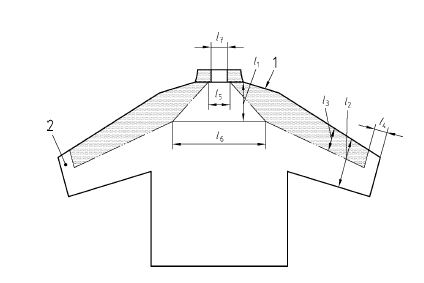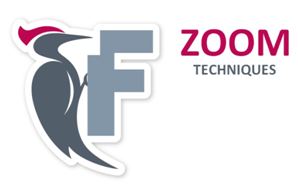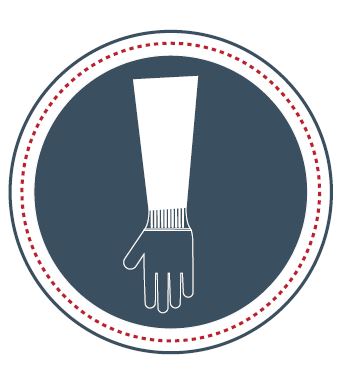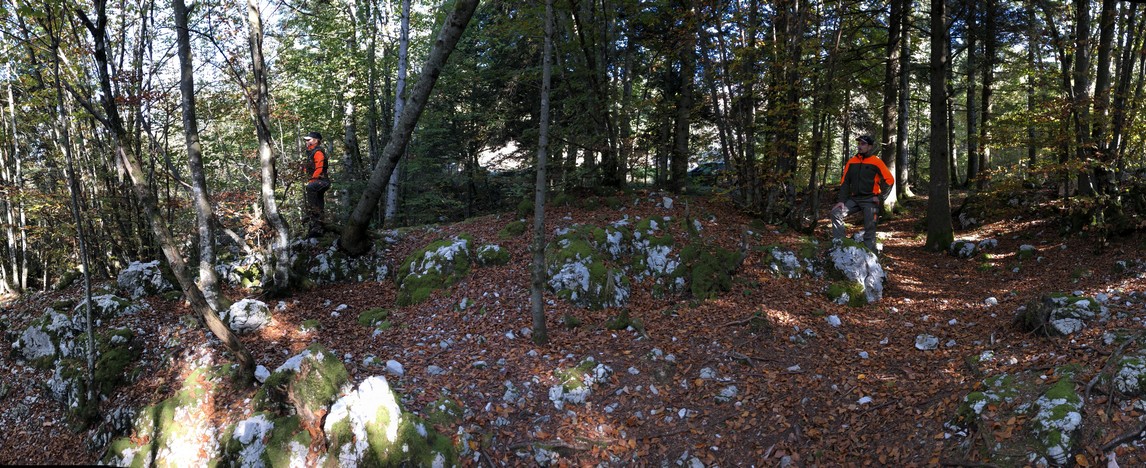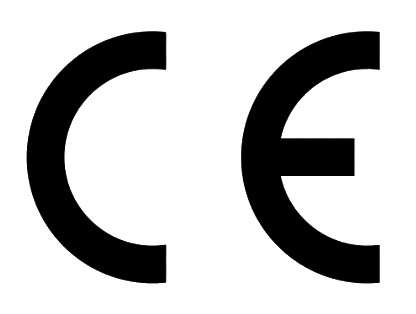
CE Marking
COMPLIANT
WITH
EUROPEAN
STANDARDS
CE marking verifies the conformity of a product with European standards. This is the visible result of an entire process covering the evaluation of a product’s overall conformity.
In April 2018, the European Directive 89/686 was repealed by Regulation (EU) 2016/425 relating to PPEs.
> Protective clothing must meet the general requirements of the EN ISO 13688 standard.
EN ISO 13688
> Safety footwear must meet the requirements of the EN 20345 standard.
>Protective gloves must meet the requirements of the general requirements of the EN standard.
420.
Brief and non-exhaustive presentation of some standards used by FRANCITAL Environnement
# Protection against cuts by hand-held chain saws
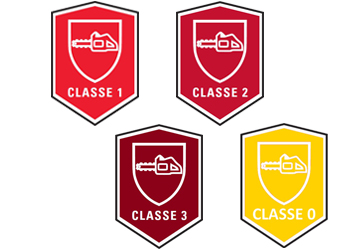
There are 4 levels of protection depending on the speed of the chain speed on impact* :
Classe 0 : 16 m/s
Classe 1 : 20 m/s
Classe 2 : 24 m/s
Classe 3 : 28 m/s
*Not all levels of protection are authorised by each part of the standard.
## Protective clothing for users of hand-held chain saws
EN 381 standard consists of several parts
Part 5 > EN 381-5 – Requirements for leg protection
Part 7 > EN 381-7 – Requirements for gloves
Part 9 > EN 381-9 –Requirements for gaiters
Part 11 > EN 381-11 – Requirements for the upper part of
the body
• Part 5 > EN 381-5 – Requirements for leg protection
Protection for legs for users of chain saws:
Trousers, leggings and overalls: EN 381-5 standard
3 levels of protection: Class 1 : 20 m/s - Class 2 : 24 m/s – Class 3 : 28 m/s
The leg protection protects against the risks of cuts from type A or B chain saws and are aimed at professionals who are fully trained, carrying out their forestry jobs, in normal working conditions.
The leg protection offers protection against risks from cuts by type C chain saws and are aimed at professionals who use these tools occasionally, not experts in the use of chain saws or carrying out forestry work in difficult working conditions.
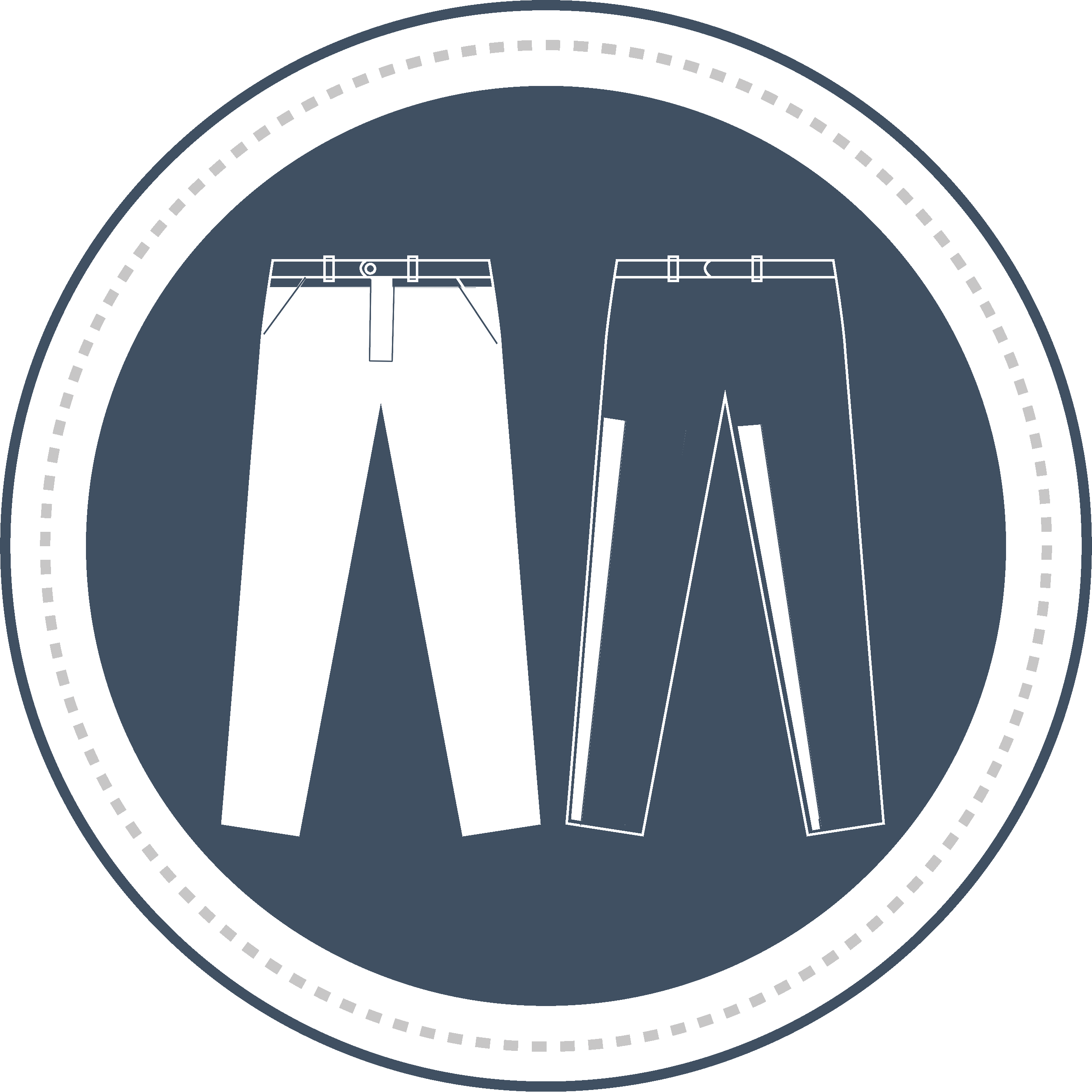
TYPE A
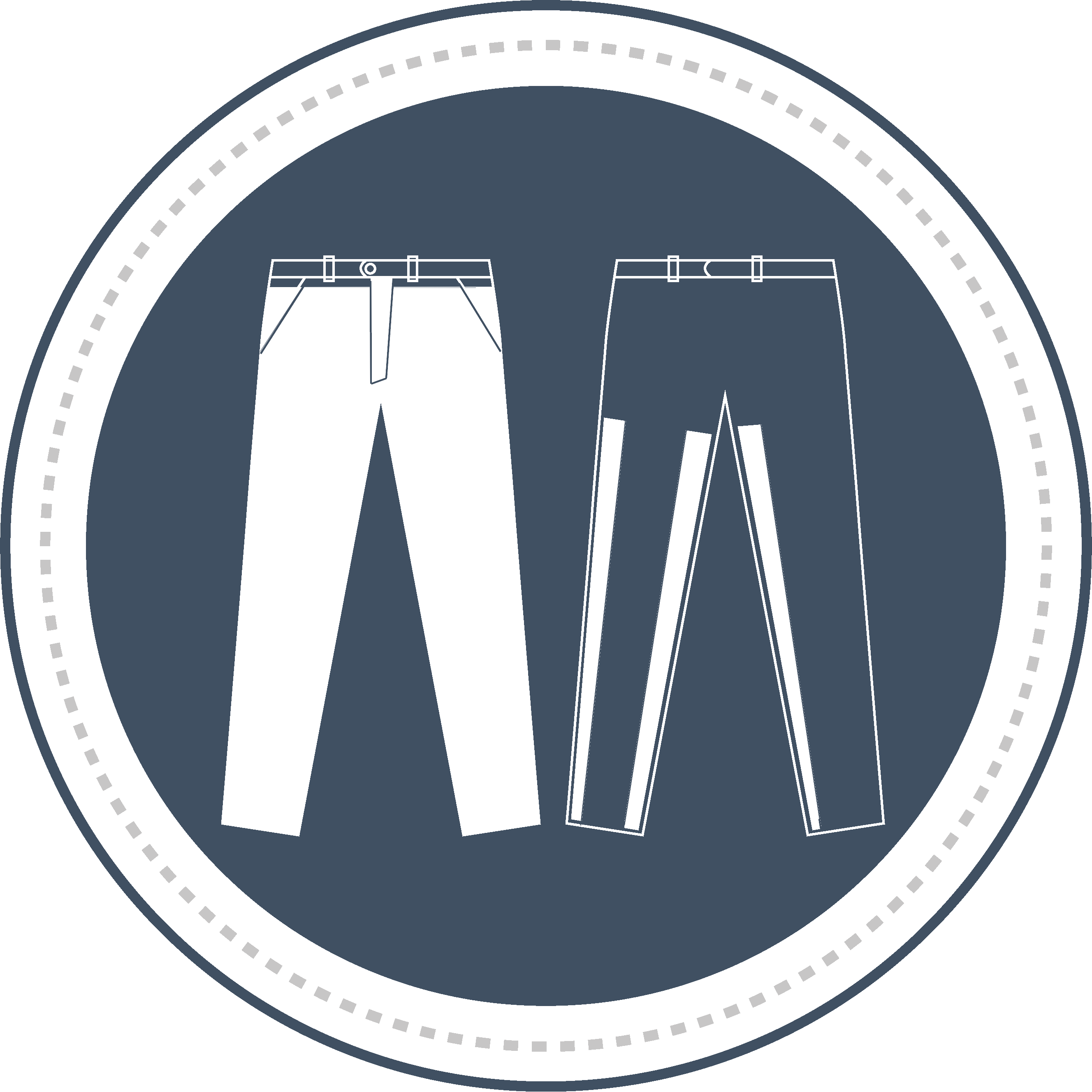
TYPE B
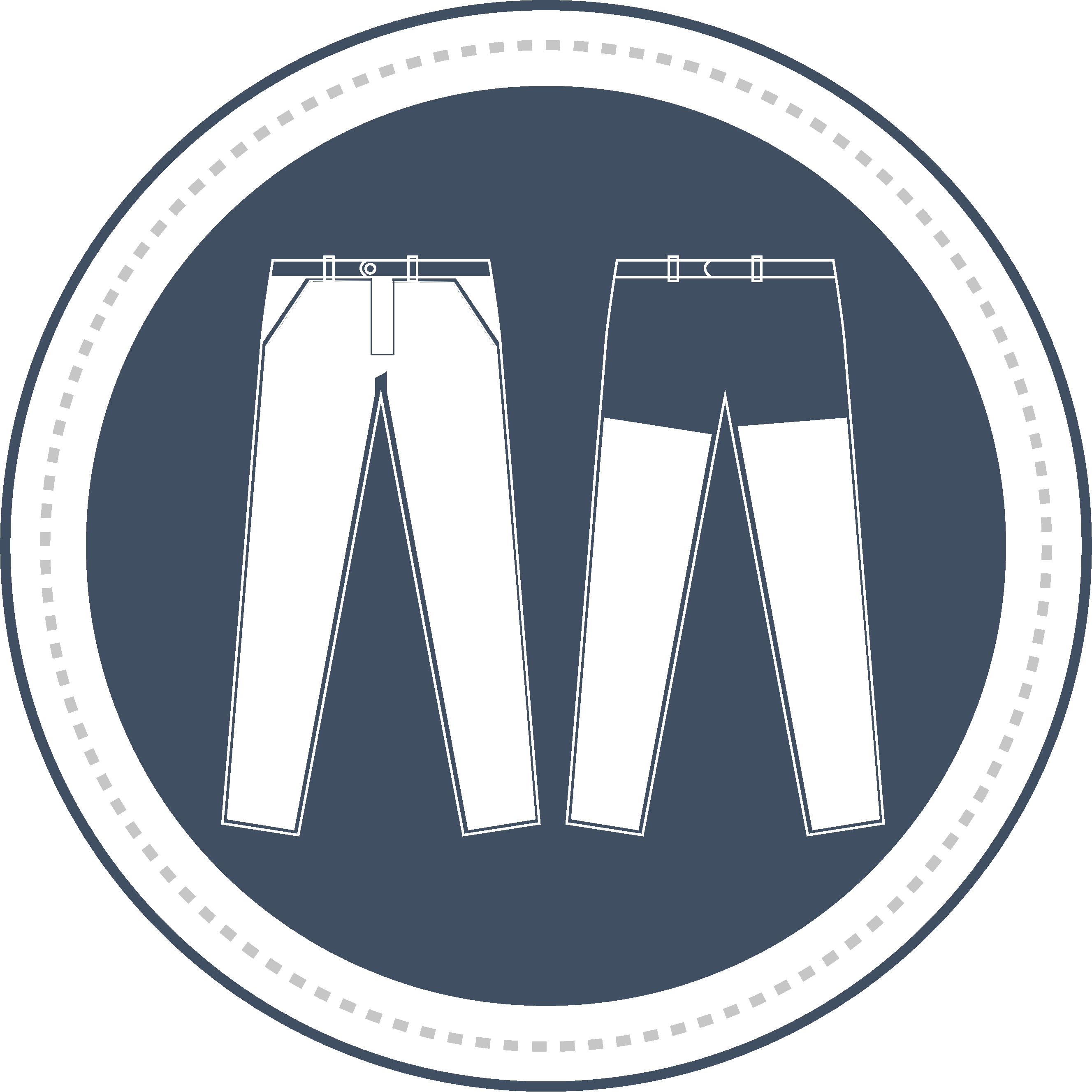
TYPE C
• Part 7 > EN 381-7 – Requirements for gloves Protective gloves
All protective gloves must meet
General requirements - EN 420
• Protection for hands for users of chain saws EN 381-7 standard
4 levels of protection :
Class 0 : 16 m/s
Class 1 : 20 m/s
Class 2 : 24 m/s
Class 3 : 28 m/s
Design A
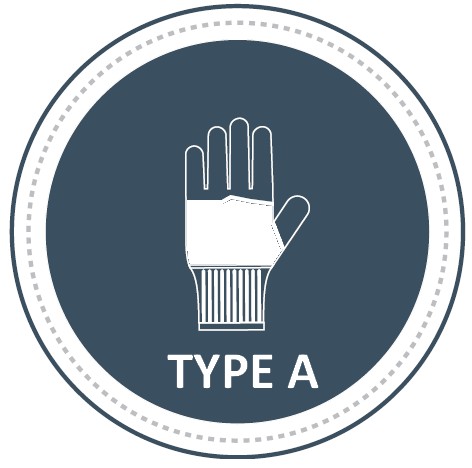
Design B
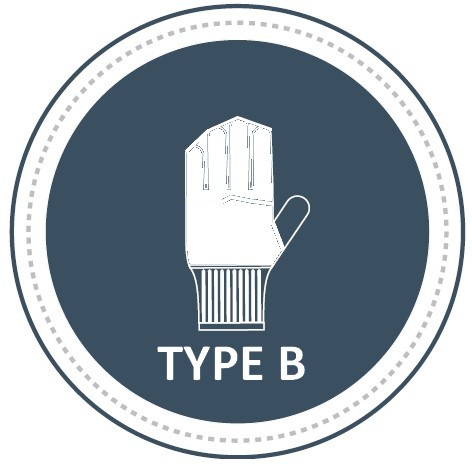
• Mechanical risks EN 388 standard
EN 388 standard: 2016
This standard is applicable for protective gloves offering protection against mechanical risks, including abrasion, cuts, rips or even perforation.
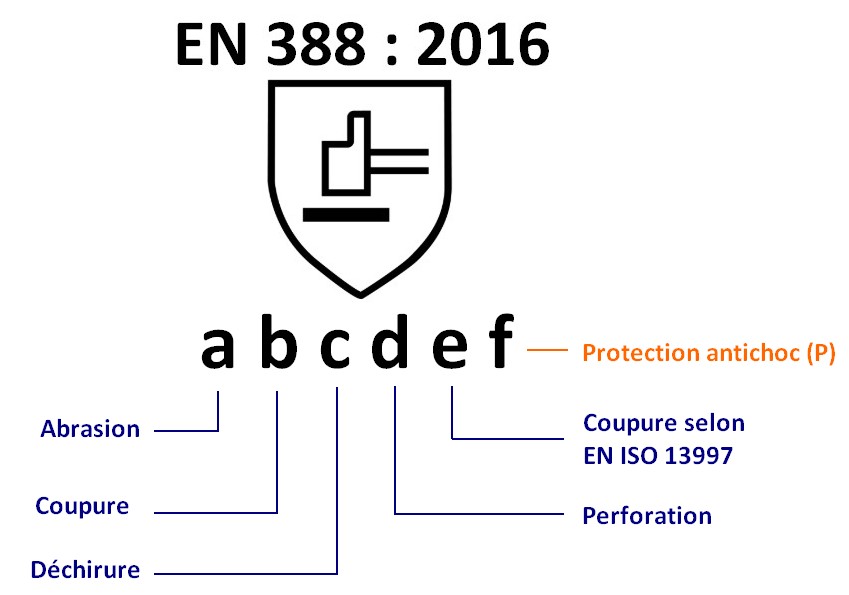
6 values are indicated:
• Resistance to abrasion
• Resistance to cuts (CutTest)
• Resistance to rips
• Resistance to perforation
• Resistance to cuts according to EN ISO
EN ISO 13997 (level indicated by letters ‘A’ to ‘F’ (30N)) : for gloves whose material use the Couptest blade
The letter « P » indicates that the glove offers protection
against shocks
• New test according EN 13594 standard: 2015 which
requires protection against shocks.
If the gloves pass the test, the letter ‘P’ is added after
the 5 digits below the icon.
Note : The letter X means that the test was not carried out,
that it was not applicable.
• Part 9 > EN 381-9 –Requirements for gaiters
Protective gaiters for users of chain saws
EN 381-9 standard
3 levels of protection : Class 1 : 20 m/s - Class 2 : 24 m/s - Class 3 : 28 m/s
The gaiters are not designed to be worn in situations where there is a significant risk of tripping. The gaiters must be worn over safety footwear
EN ISO 20345
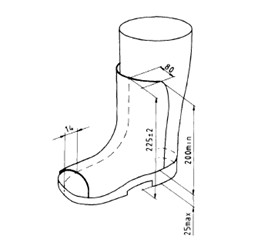
• Part 11 > EN 381-11 – Requirements for the upper part of the body
Protection for the upper body for users of chain saws: Jackets
EN 381-11 standard
4 levels of protection :
Class 0 : 16 m/s
Class 1 : 20 m/s
Class 2 : 24 m/s
Classe 3 : 28 m/s
## Foot protection: protective footwear and boots
•Protective footwear for risks of cuts by chain saws :EN ISO 17249
3 levels of protection :
Class 1 : 20 m/s
Class 2 : 24 m/s
Class 3 : 28 m/s
Protective footwear for risks of cuts by chain saws is safety footwear meeting the requirements of the EN 20345 standard.
# High Visibility Clothing
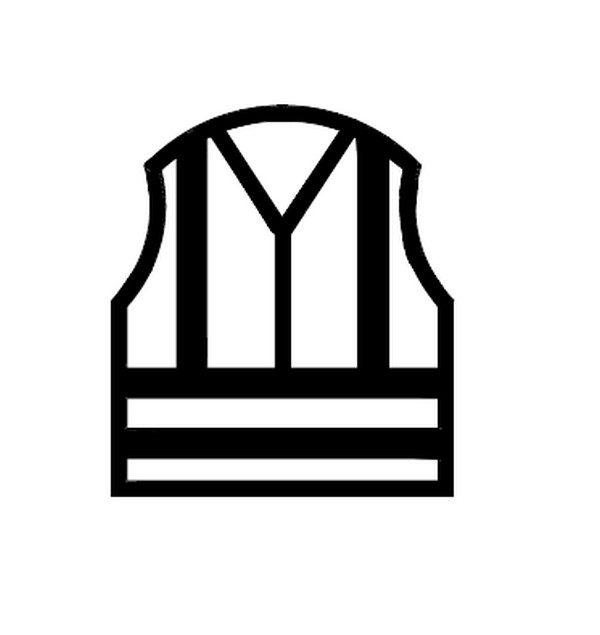
High Visibility Clothing
EN ISO 20471
The European standard ISO 20471 specifies the characteristics for high visibility warning clothing for professional usage.
These category 2 PPEs are designed to visually show the presence of the user so that they can be noticed in dangerous situations, both during the day and at night (lighting by car headlights).
The ISO 20471 standard distinguishes one type of performance:
> : The florescent surface material and
reflective bands
Are taken into account :
> The florescent material
The florescent material allows for visibility during the day. It transforms part of the non visible light (UV) into visible light. The yellow, orange and red colouring creates a contrast with the natural environment.
> The reflective bands
The reflective material ensures visibility at night. It throw backs the maximum light towards its source (vehicle headlights...).
Depending on the surface of the florescent and reflective material, the standard distinguishes 3 classes of high visibility clothing :
Surface minimale visible de chaque matière (m2)
| M2 | Class 1 | Class 2 | Class 3 | |||
| Surface of reflective material |  | 0.1 |  | 0.13 |  | 0.2 |
| Surface of florescent material |  | 0.14 |  | 0.5 |  | 0.8 |
| Surface of opposition material |  | 0.2 |  | |||
Note : the florescent material must be distributed between the front and back with a
tolérance of +/- 10%.
# Bad weather clothing
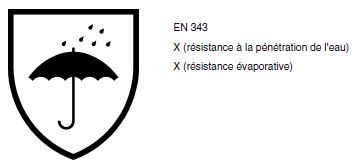
Rainproof clothing
Resistance from water penetration, Wp
Class 1 < 8000
Class 2 8000< Wp < 15000
Class 3 > 15000
Evaporative resistance, Ret
Class 1 Ret > 40
Class 2 20<Ret < ou = 40
Class 3 Ret < ou = à 20
Ret: class 1 to a limited period of wear
Praised by expert certifications
This entails a certified approach implemented by an independent notified organisation as no European standard is available. The expert certification corresponds to the creation of technical references adapted to innovative products.
→ Protective cuffs for users of hand-held chain saws
Performance of cuffs verified by experts by using the following technical rules: general requirements for protective clothing: EN ISO 13688:2013
Certain requirements of the EN 381-11:2002 standard
Class 0 (16 m/s) / Class 1 (20 m/s) / Class 2 (24 m/s).
 FR
FR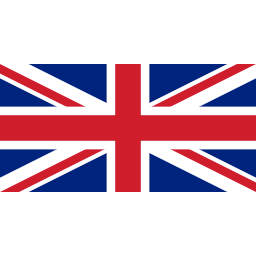 EN
EN DE
DE ES
ES
